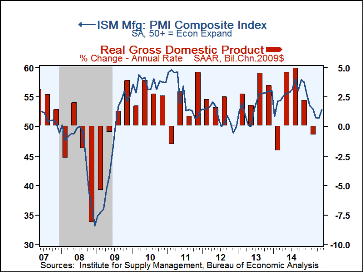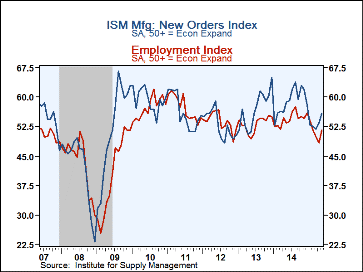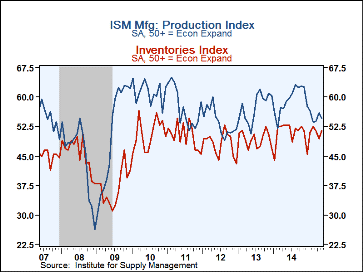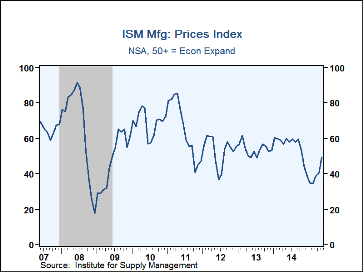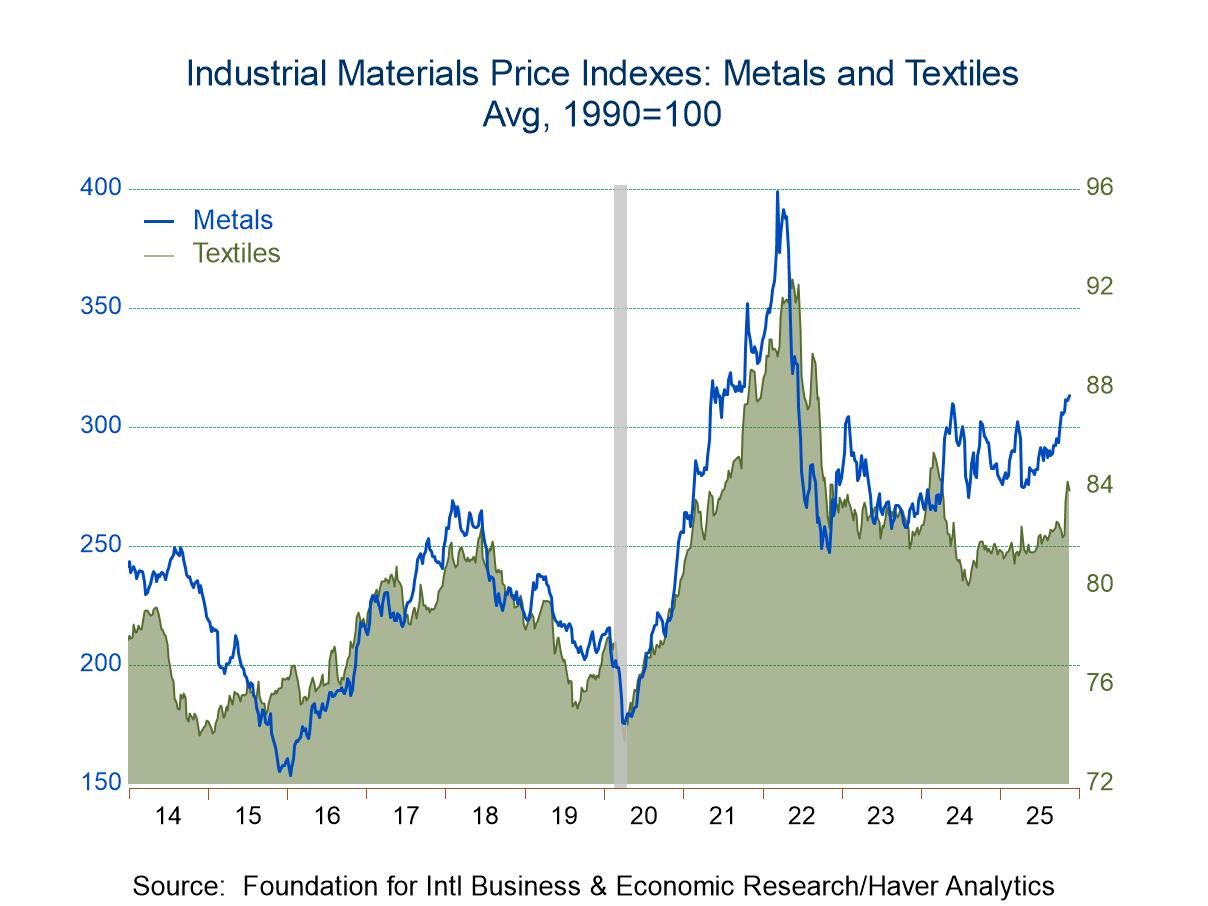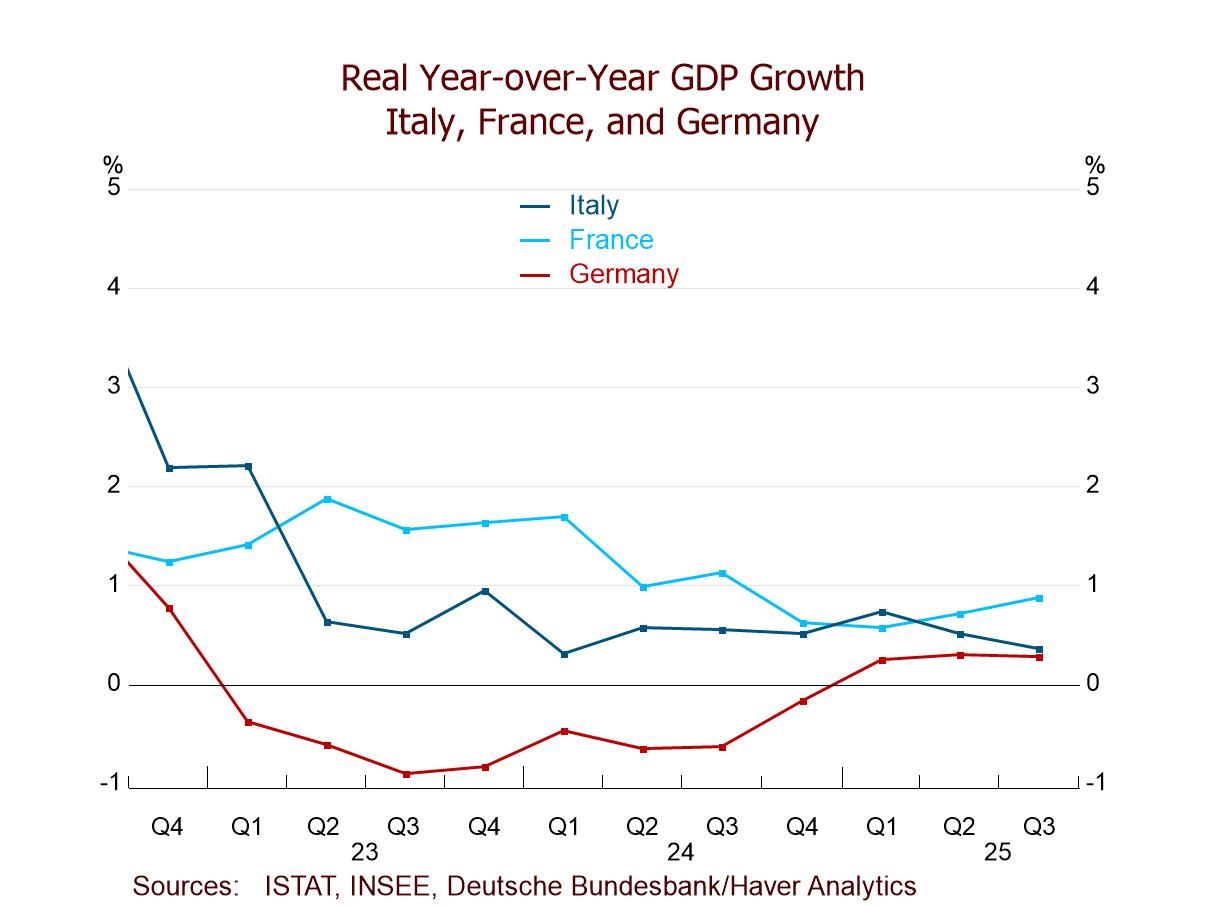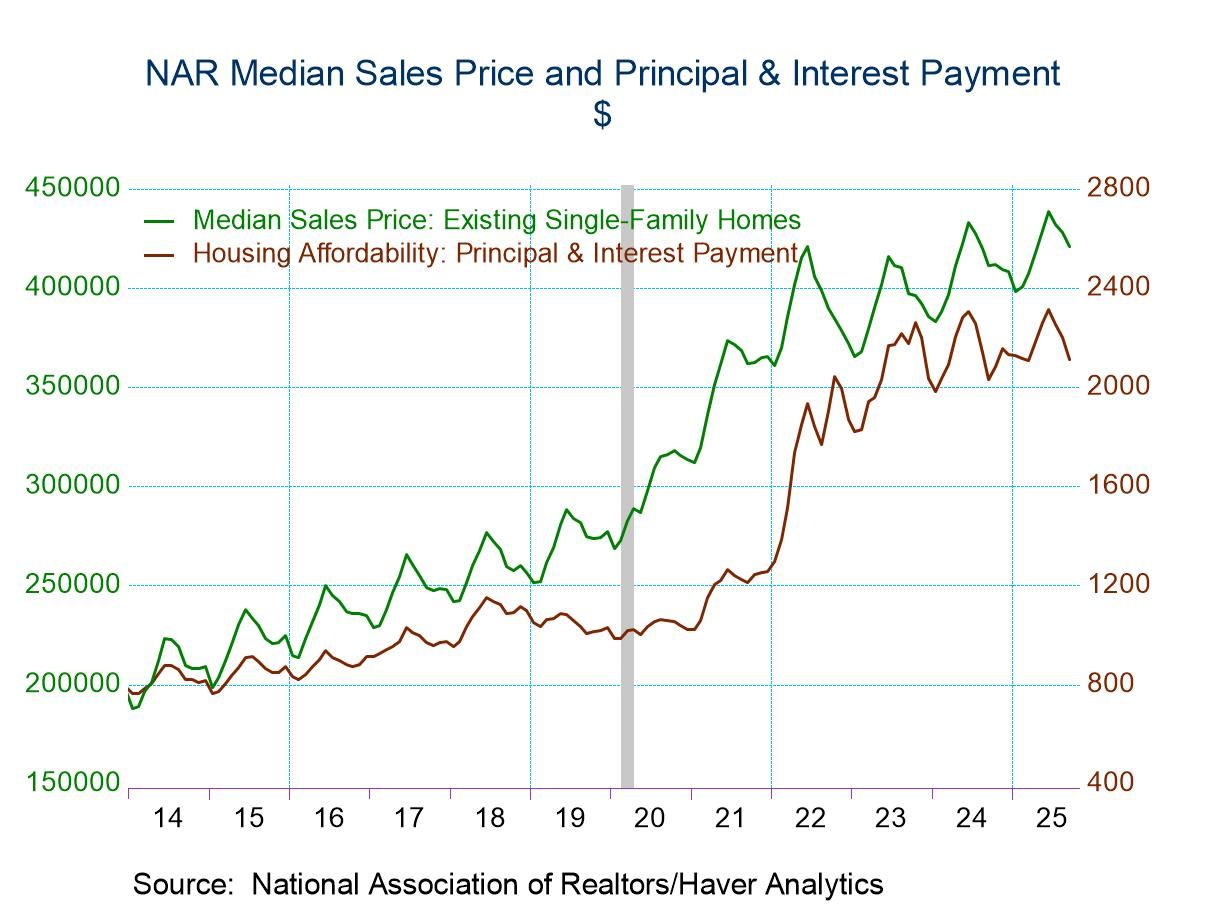 Global| Jun 01 2015
Global| Jun 01 2015U.S. ISM Manufacturing Index Moves Up to Three-Month High
by:Tom Moeller
|in:Economy in Brief
Summary
Factory sector activity improved during May following several months of lackluster performance. The Composite Index from the Institute for Supply Management (ISM) improved to 52.8 following an unrevised 51.5 in April and March. The [...]
Factory sector activity improved during May following several months of lackluster performance. The Composite Index from the Institute for Supply Management (ISM) improved to 52.8 following an unrevised 51.5 in April and March. The latest figure remained down, nevertheless, from the August 2014 high of 58.1. Improvement to 52.0 had been expected in the Action Economics Forecast Survey. During the last ten years, there has been a 73% correlation between the level of the index and the q/q change in real GDP.
Leading last month's rise was a recovery in the employment index following one month below break-even. The latest level (51.7) was the highest since January. During the last ten years, there has been an 89% correlation between the index level and the m/m change in factory sector payrolls. The new orders reading (55.8) also recovered to its highest level this year while inventories (51.5) recouped April's decline. The rise in the supplier deliveries index to 50.7 showed the slowest rate of product delivery in three months while production (54.5) gave back most of its April recovery.
The prices reading jumped to the highest level since October. Fifteen percent of respondents indicated higher prices while 16 percent reported them lower. During the last ten years, there has been an 85% correlation between the index and the m/m change in the core intermediate PPI.
The export order index (50.0) reversed much of its April improvement while imports rose to the highest level since January. The orders backlog series rose to its highest level in six months.
The figures from the Institute For Supply Management (ISM) are diffusion indexes. A reading above 50 represents growth in factory sector activity. They can be found in Haver's USECON database. The expectations number is in the AS1REPNA database.
| ISM Mfg | May | Apr | Mar | May '14 | 2014 | 2013 | 2012 |
|---|---|---|---|---|---|---|---|
| Composite Index | 52.8 | 51.5 | 51.5 | 55.6 | 55.7 | 53.8 | 51.7 |
| New Orders | 55.8 | 53.5 | 51.8 | 58.7 | 59.0 | 56.9 | 52.9 |
| Production | 54.5 | 56.0 | 53.8 | 59.0 | 59.2 | 57.5 | 53.7 |
| Employment | 51.7 | 48.3 | 50.0 | 53.5 | 54.5 | 53.2 | 53.8 |
| Supplier Deliveries | 50.7 | 50.1 | 50.5 | 53.6 | 55.0 | 51.9 | 50.0 |
| Inventories | 51.5 | 49.5 | 51.5 | 53.0 | 50.8 | 49.4 | 48.2 |
| Prices Paid Index (NSA) | 49.5 | 40.5 | 39.0 | 60.0 | 55.6 | 53.8 | 53.2 |
Tom Moeller
AuthorMore in Author Profile »Prior to joining Haver Analytics in 2000, Mr. Moeller worked as the Economist at Chancellor Capital Management from 1985 to 1999. There, he developed comprehensive economic forecasts and interpreted economic data for equity and fixed income portfolio managers. Also at Chancellor, Mr. Moeller worked as an equity analyst and was responsible for researching and rating companies in the economically sensitive automobile and housing industries for investment in Chancellor’s equity portfolio. Prior to joining Chancellor, Mr. Moeller was an Economist at Citibank from 1979 to 1984. He also analyzed pricing behavior in the metals industry for the Council on Wage and Price Stability in Washington, D.C. In 1999, Mr. Moeller received the award for most accurate forecast from the Forecasters' Club of New York. From 1990 to 1992 he was President of the New York Association for Business Economists. Mr. Moeller earned an M.B.A. in Finance from Fordham University, where he graduated in 1987. He holds a Bachelor of Arts in Economics from George Washington University.


